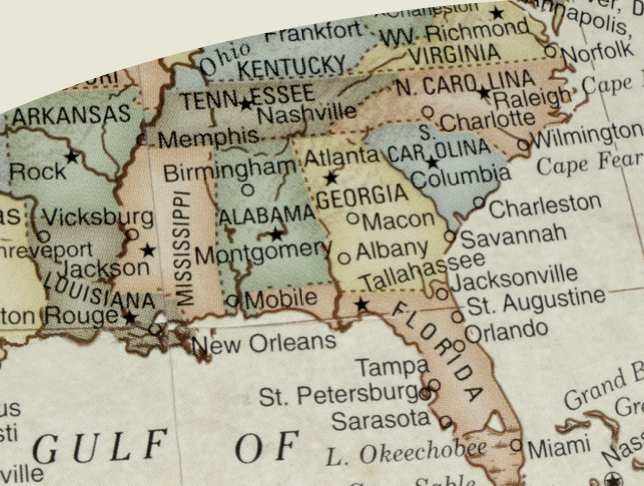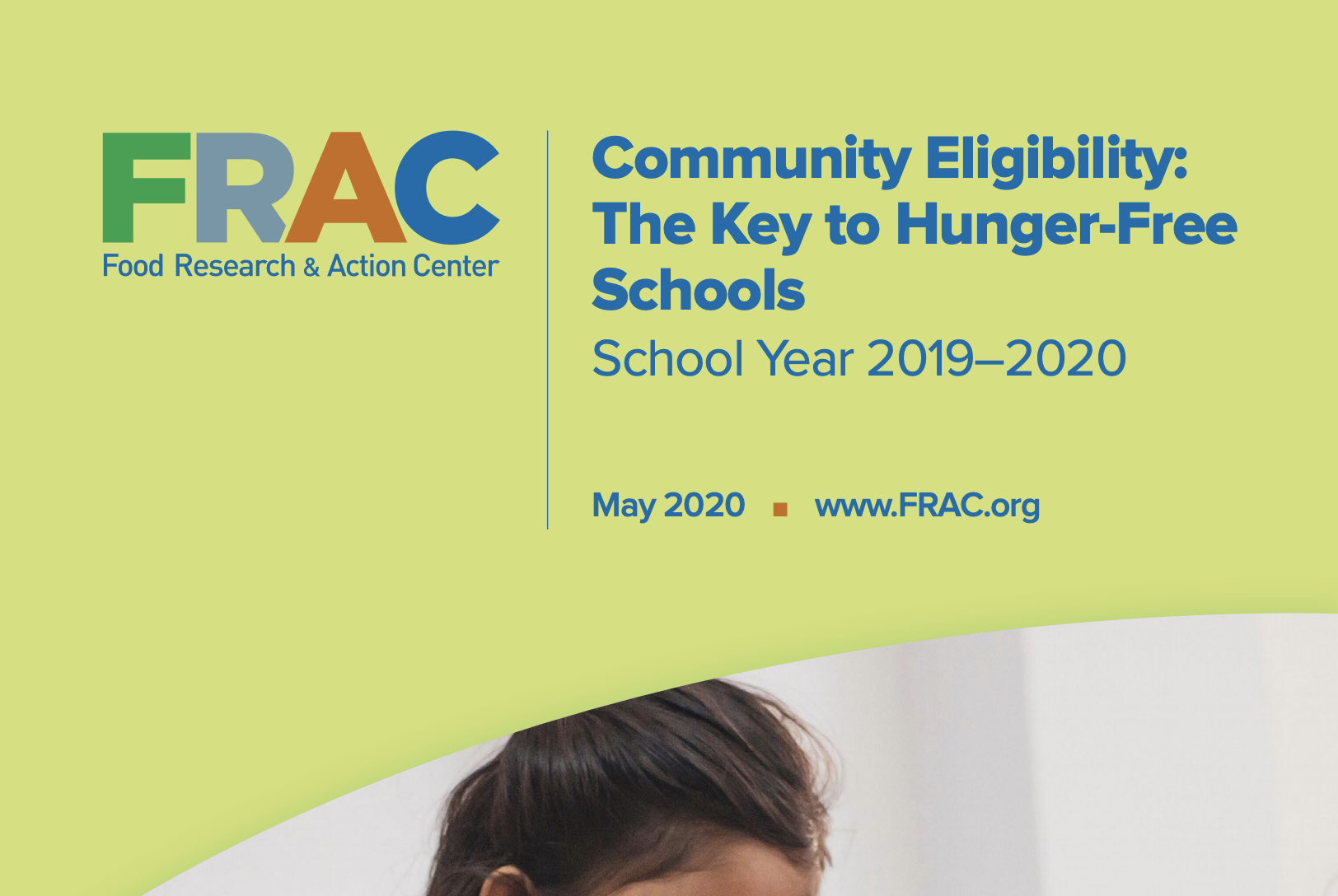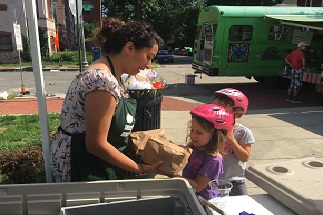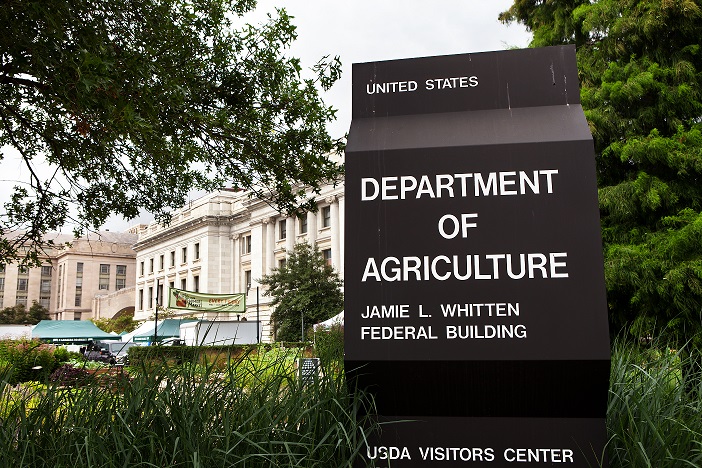What you need to know:
- The Census has been collecting data on hardship during COVID-19 every two weeks. Learn more about how food insufficiency (sometimes or often not having enough to eat, measured for the prior 7 days) has impacted vulnerable populations throughout COVID-19.
- Every year the Census and USDA measure food insecurity (the inability to afford adequate, nutritious food at all times, measured for the prior 12 months). Learn more about how food insecurity increased in 2020 due to COVID-19.
- On March 10, 2021, the House passed the American Rescue Plan Act of 2021, sending it to the President for his signature. The COVID-19 relief bill will help bolster nutrition assistance for tens of millions of people across the country. Explore the U.S. Department of Agriculture (USDA)’s Facts on Nutrition Assistance in the American Rescue Plan.
- On January 22, 2021 President Biden signed executive orders, which, among other things, ask USDA to take steps to strengthen the Supplemental Nutrition Assistance Program (SNAP) and Pandemic EBT (P-EBT). Check out FRAC’s statement for more information.
- Explore how you can leverage Federal Nutrition Resources for Disaster Recovery during COVID-19.
Share this image on social media to urge advocates to take action!
New Tools You Can Use

New! P-EBT Study
Explore our latest research
New Report -- Poverty, Hunger, Health and the Federal Food Programs: A Profile of the Southern Region
Learn more about COVID-19's impact on the Federal Nutrition Programs in the Southern Region
FRAC's 2020 Community Eligibility Report
Learn more about the current trends!
What USDA waivers exist for serving meals?
Explore the available nationwide waivers.
CACFP Update: Families First Act
FRAC’s update summarizing the Families First Act’s changes to Child and Adult Care Food Program waivers.
Summary of USDA's Nationwide Nutrition Waivers in Response to COVID-19
The Families First Coronavirus Response Act gives the USDA the authority to issue nationwide waivers to ensure access to meals through the child nutrition programs as communities respond to COVID-19.
Maximizing WIC’s Role in Supporting Health, Food Security, and Safety During the COVID-19 Pandemic
Actions that WIC, advocates, partner organizations, and state and local policymakers can take to help preserve access to WIC during this pandemic.
Summary of USDA's Nationwide Child Nutrition Waivers in Response to COVID-19
Q&As from the USDA on the logistics of delivering meals through the Summer Food Service Program (SFSP) and the Seamless Summer Option (SSO) while using existing authority.
Federal Nutrition Programs: Response to COVID-19
- Pandemic EBT (P-EBT)FRAC Resources
FRAC P-EBT Webpage
FRAC P-EBT FAQ
FRAC’s P-EBT State Program Map
FRAC/CBPP P-EBT Documentation Project
Includes state-specific profile tables with key aspects of each state’s P-EBT
implementation approach, resource library with more coming soon. - Child Nutrition Programs
FRAC Resources
Tracker: School Reopening Guidance, Child Nutrition Agency Resources for Fall 2020
Summary of USDA’s Nationwide Child Nutrition Waivers in Response to COVID-19
Use Innovative Delivery Meal Service Models to Serve Meals as Schools Reopen
As states and school districts start to plan and prepare to reopen schools, it is critical to think about what changes should be made to meal service to protect students and staff. Read more to learn about possible solutions.FRAC has hosted a number of webinars since March on various topics to ensure students have access to the child nutrition programs during COVID-19. To view, go to FRAC’s YouTube Channel.
USDA Guidance
Congressional and Administrative Letters
On September 14, 2021, over 500 national, state, and local organizations signed on to a letter asking USDA to extend waiver flexibilities for community sponsors (non-school sponsors) for the 2021–2022 school year.
On September 21, 2020, nearly 1,400 national, state, and local organizations signed on to a letter asking USDA to extend all child nutrition waivers through the rest of the 2020–2021 school year.
August 31, 2020, letter to USDA Secretary Sonny Purdue from mayors across the country in support of school meal waiver flexibilities.
August 26, 2020, letter to USDA from House Education and Labor Committee Republican Leader Virginia Foxx and 24 Republican Members from the Education and Labor Committee and the Agriculture Committee.
August 17, 2020, letter to USDA from Senate Agriculture Committee Chairman Pat Roberts and 19 other Senate Republicans.
August 14, 2020, letter to USDA from Senate Agriculture Committee Ranking Member Debbie Stabenow (D-MI) and House Education and Labor Committee Chairman Bobby Scott (D-VA).
On August 11, 2020, over 1,300 national, state, and local organizations signed on to a letter asking USDA to issue additional child nutrition waivers to support access and program operations in the upcoming school year.
On July 20, 2020, over 70 national organizations signed on to a letter asking USDA to issue additional child nutrition waivers to support access and program operations in the upcoming school year.
On April 30, 2020, bipartisan letter from Reps. David Trone (D-MD), Don Young (R-AK), and 53 of their house colleagues urging USDA to continue to issue nationwide waivers, issue a nationwide area eligibility waiver, and extend the child nutrition waivers past June 30.
- Feeding Older AmericansHelping Older Adults Struggling Against Hunger Access Food in the Age of COVID-19
This brief explores four available actions to minimize exposure to COVID-19 through person-to-person contact when it comes to older adults accessing food.Older Adults Benefit From Federal Nutrition Programs During the COVID-19 Pandemic
FRAC’s one page summary related to food assistance and the Federal Nutrition Programs as they are effected by COVID-19.Older Adult (age 60+) Nutrition Programs Referral Chart During COVID-19
A chart from FRAC breaking down U.S. Department of Agriculture — Food and Nutrition Service and U.S. Department of Health and Human Services — Administration for Community Living resources for Older Adults during the COVID-19 pandemic.New Survey Data: Demand on Meals on Wheels National Network Swells and Wait Lists Grow Due to COVID-19 Pandemic
This new survey conducted by Meals on Wheels America found that nearly all local Meals on Wheels programs are experiencing increased demand as a result of COVID-19, with four in five programs reporting that new meal requests have doubled since March 1, 2020.Senior Nutrition Program: Nutrition Services Frequently Asked Emergency Management Questions
Answer frequently asked questions relating to the Senior Nutrition Program and COVID-19 from the Administration for Community Living. - CACFPCommunications Toolkit: Maximizing the CACFP Area Eligibility Waiver for Family Child Care Homes
Emerging Federal Funding Streams for Farm to Early Care and Education
CCFP Roundtable Releases Common Sense Remote Visit Recommendations
Child and Adult Care Food Program: USDA Waivers
CACFP Participation and Reimbursement During COVID-19 Pandemic: Analysis of Preliminary USDA Data (without tables)
CACFP Participation and Reimbursement During COVID-19 Pandemic: Analysis of Preliminary USDA Data (with tables)
A Guide to Connecting People to Federal Nutrition Program Resources During COVID-19
(Spanish) A Guide to Connecting People to Federal Nutrition Program Resources During COVID-19
Food and Nutrition Resources During COVID-19
Considerations for Outdoor Learning Gardens and Community Gardens During COVID-19
Guía de recursos de programas federales de nutrición durante el COVID-19
CACFP: Providing Multiple Meals at a Time for Children During the Coronavirus (COVID-19) Pandemic
Powerpoint: National Head Start Association presentation from FRAC on Child and Adult Care Food Program
CACFP Update: Families First Act
FRAC’s advocacy initiative to facilitate the success of CACFP in continuing to support child care during the COVID-19 pandemic. - SNAPFRAC Resources
Pandemic EBT FAQ
Learn more about Pandemic Electronic Benefit Transfer eligibility and states’ implementation of this program.Why the Administration and Congress Need to Build on SNAP Down Payments Now
FRAC Chat blog clarifying the USDA’s emergency benefit announcement and FRAC’s congressional ask for the SNAP 15 percent boost to maximum allotments.Pandemic EBT
Guidance from FRAC that summarizes and offers considerations for implementing Pandemic Electronic Benefit Transfer (P-EBT). The Families First Coronavirus Response Act creates the P-EBT program, an important opportunity to provide nutritional resources to families who are losing access to free or reduced-price school meals as school across the country close in response to COVID-19.An Advocate’s Guide to the Disaster Supplemental Nutrition Assistance Program (D-SNAP)
Learn how D-SNAP works and what advocates, elected officials, and service providers can do to reduce hunger and food insecurity before, during, and after a disaster.USDA Waivers
SNAP – Periodic Report Flexibility for Non-Extended Recertification Cases
USDA updated information on approvals and denials of certain SNAP application processing waivers
SNAP Emergency Allotments to Current SNAP Households
The USDA grants states waivers to issue SNAP emergency allotments bringing households’ benefit amounts up to the maximum benefit for their household size.USDA blanket approval for states to adjust SNAP interview requirements
USDA Guidance
SNAP benefit levels for January through June 2021
Month-to-Month Continuation of Emergency SNAP benefits
SNAP COVID-19 Emergency Allotments Guidance
Guidance from the USDA Food and Nutrition Service (FNS) regarding SNAP state agencies on implementing emergency SNAP allotments pursuant to H.R. 6201USDA FNS Memorandum SNAP Questions and Answers, COVID-19, Set #1
State-by-state list of SNAP EBT contractors (March 2020)
SNAP Guidance on Time Limits for Recipients Currently Enrolled
Guidance from the USDA Food and Nutrition Service (FNS) regarding SNAP state agencies on current status of SNAP time limits pursuant to H.R. 6201SNAP Pandemic Planning Guidelines
Learn how State agencies can work within their agency and with State-level pandemic planning authorities to update their pandemic plans.College Student SNAP Access
Education Department Highlights New SNAP Access for College Students During COVID
Guidance on temporary improvement enacted in December 2020Litigation
September 11 press release: “Federal Court Issues Order Stopping USDA from Denying Emergency SNAP Benefits to the Poorest Pennsylvanians,” from Community Legal Services of Philadelphia and Morgan, Lewis & Bockius
September 11 ruling: Federal court enjoins USDA from denying Pennsylvania requests to include SNAP households already at the maximum benefit level among those to receive Emergency SNAP payments. Opinion and Order.
Online Purchasing
Online Purchasing Pilot approved states: AL, AZ, CA, CO, CT, DC, DE, FL, GA, IA, ID, IL, IN, KS, KY, MA, MD, MI, MN, MO, MS, NH, NJ, NM, NC, NE, NV, NY, OH, OK, OR, PA, RI, SC, SD, TN, TX, UT, VA, VT, WA, WI
The online purchasing pilot initially began in AL, FL, IA, NE, NY, OR, WA. Arizona and California were approved April 8. Florida and Idaho were approved April 11. District of Columbia., and North Carolina were approved April 17. Kentucky, Missouri, and Texas were approved April 21. Vermont was approved April 24. Minnesota was approved May 1. Nevada was approved May 4. Colorado was approved May 6. New Mexico was approved May 7. Rhode Island was approved May 8. Wisconsin was approved May 11. Connecticut, Georgia, Illinois, Indiana, Maryland, Massachusetts, Michigan, New Jersey, Ohio, Oklahoma, Pennsylvania, Tennessee and Virginia were approved May 20. New Hampshire was approved June 3. South Dakota was approved June 5. Delaware and Mississippi were approved June 10. South Carolina and Utah were approved June 16. Kansas was approved June 23.FMI — The Food Industry Association Blog Post: It’s A “SNAP” To Order Online and Pay At Store
FMI — The Food Industry Association blog regarding “click, collect and pay” options for grocery access for SNAP shoppers.SNAP Outreach Resources
Hunger Solutions New York SNAP Outreach Resources
SNAP COVID-19 Special Outreach Campaign Companion
General SNAP Flyer Template
SNAP Lost Work Flyer
SNAP Senior FlyerFMI – The Food Industry Association Feeding Assistance Toolkit
Outreach Flyer on SNAP Emergency Payments
Volante de divulgación sobre pagos de emergencia en SNAPLetters From FRAC and Partners
August 12 letter from FRAC, Community Catalyst, National Low Income Housing Coalition, and Service Employees International Union (SEIU) calling for a comprehensive COVID-19 relief bill.
June 18 letter from nearly 2,500 organizations urging the Senate to boost SNAP benefits to protect individuals and communities against hardship and jump-start a strong economic recovery.
May 28 letter from the Sustainable Food Policy Alliance (SFPA), including Danone North America, Mars Incorporated, Nestlé USA, and Unilever United States, urging Congressional leadership to provide a temporary increase in SNAP benefits in the next coronavirus relief legislation, along with other measures that would boost nutrition-related resources.
Utilizing Restaurants to Get Food to SNAP Participants
A letter to USDA Secretary Perdue asking him to promote the Restaurant Meals Program so people are aware they can use their TANF and SNAP EBT funds through this program. The letter is signed by FRAC, the International Foodservice Distributors Association, the National Council of Chain Restaurants, the National Restaurant Associate, and the Western Center on Law & Poverty.AARP Letter
A letter to Congress from the AARP asking to strengthen Federal Nutrition Programs among other programs in response to COVID-19.Letters from Federal and State Policymakers and Administrators
August 27 letter from the Pennsylvania Human Services Department leader urging Congress to boost SNAP benefits.
September 8 American Public Human Services Association (APHSA) issued a special statement about investing resources in nutrition and other human services for a strong and equitable economic recovery.
August 7 letter from American Public Human Services Association (APHSA) to Congress in support of SNAP boosts, Pandemic EBT (P-EBT) and program flexibilities” to ensure families impacted by the pandemic can put food on the table.”
August 7 letter from National Association of Counties (NACo) and the National Association of County Human Services Administrators (NACHSA) in support of H.R. 7794 to extend current SNAP flexibilities as COVID-19 continues.
July 27 press release on legislation to extend SNAP waiver flexibility introduced by Reps. Marcia L. Fudge (D-OH), Jim McGovern (D-MA), Alma Adams (D-NC), Jahana Hayes (D-CT), Kim Shrier (D-WA), Al Lawson, Jr. (D-FL) and Jimmy Panetta (D-CA).
July 27 letter from the American Public Human Services Association (APHSA) issued a statement explaining the importance of granting state SNAP agencies flexibility for processing applications and accommodating social distancing.
July 22 letter from Kansas Governor Laura Kelly in support of boosting SNAP benefits.
July 21 letter from Senator Deb Fisher (R-NE) demanding boosts to SNAP benefits.
July 1 letter from Reps. Marcia L. Fudge (OH), Barbara Lee (CA), and John Katko (NY) delivered a letter to Congressional leaders urging an increase in Supplemental Nutrition Assistance Program (SNAP) to address rising food insecurity and unprecedented demand at food banks across the country.
June 1 letter from 25 state attorneys general urging Congress to include provisions in the next coronavirus stimulus package that would prohibit the use of funds to finalize or implement three administrative rules that would restrict Americans’ ability to receive critically necessary SNAP benefits.
May 6 letter from Maryland delegation in support of SNAP in the next COVID-19 relief package.
May 5 letter from Wisconsin Senator Baldwin, Congresswoman Moore, Congressman Kind, and Congressman Pocan in support of SNAP in the next COVID-19 relief package.
April 29 letter from 22 Senators led by Democratic Senators Merkely (OR) and Murphy (CT) urging Senate leaders to boost SNAP benefits.
April 28 letter from Congressman Panetta, Senator Murphy announce legislation to expand access to Restaurant Meals Program amid COVID-19.
April 27 letter from Senators Murphy (D-CT), Hirono (D-HI), Harris (D-CA) and Warren (D-MA) urging USDA to allow college students unemployed due to COVID-19 access to SNAP.
April 21 letter from bipartisan National Governors Association calling for 15 percent increase to maximum SNAP benefit and other relief.
April 16, a letter from two Senators and nine Representatives from New Jersey asking Congressional leaders to bolster SNAP benefits as a legislative priority.
April 16 letter from Colorado Governor Jared Polis (D) and Senators Michael Bennet (D) and Cory Gardner (R) wrote their own on how increasing SNAP benefits will help their state.
April 13, joint statement from House Speaker Nancy Pelosi and Senate Democratic Leader Chuck Schumer that included boosting SNAP as an urgent priority in an interim emergency coronavirus relief package. This follows their joint statement on April 8, which listed a “15 percent increase to the maximum SNAP benefit to help put food on the table” among the top priorities.
April 9 Congressional Progressive Caucus wrote a letter to Speaker of the House Nancy Pelosi detailing their priorities for the fourth Congressional relief package, including strengthening SNAP.
April 6 House letter led Reps. Jim McGovern (D-MA), Marcia Fudge (D-OH), Rosa DeLauro (D-CT) and Ayanna Pressley (D-MA) and signed by 136 of their colleagues urging House and Senate leaders to prioritize anti-hunger efforts and strengthen SNAP in the next COVID-19 legislative relief package.
- WICLessons Learned: Examining WIC During COVID-19 for Policy and Program Recommendations Going Forward
Considerations for Outdoor Farmers Markets During COVID-19
Check out these Tennessee hunger and WIC profiles.
WIC: USDA Waivers in Response to COVID-19
The U.S. Department of Agriculture (USDA) created a State WIC agency template to allow agencies to request the multiple WIC flexibilities granted under the Families First Coronavirus Response Act.A Guide to Connecting People to Federal Nutrition Program Resources During COVID-19
(Spanish) A Guide to Connecting People to Federal Nutrition Program Resources During COVID-19
Food and Food System Resources During COVID-19
Food and Nutrition Resources During COVID-19
Guía de recursos de programas federales de nutrición durante el COVID-19
Maximizing WIC’s Role in Supporting Health, Food Security, and Safety During the COVID-19 Pandemic
Actions that WIC, advocates, partner organizations, and state and local policymakers can take to help preserve access to WIC during this pandemic.Making WIC Work Better: Strategies to Reach More Women and Children and Strengthen Benefits Uses
FRAC supports the use of the full range of disaster options recommended in this report. These include maximizing options for WIC food package and redemption flexibilities, benefit replacement, and simplified income eligibility as necessary; continuing WIC services; and encouraging partners to disseminate WIC’s help to impacted communities. - Legislative UpdatesMajor COVID-19 Relief Bills
On October 1, the House passed an updated HEROES Act, a comprehensive-COVID-19 relief bill that includes much-needed SNAP benefit boosts that are critical to reducing the number of hungry households and to stimulating the economy. The bill contains additional nutrition provisions and makes investments in other vital programs that assist people in meeting their basic needs during COVID-19. Read our statement and analysis.
On September 30, the Senate passed and the President signed into law H.R.8337, a bill making continuing appropriations for fiscal year 2021 through December 11, 2020. The bill, which passed the House on September 22, takes important steps to address childhood hunger, including strengthening and expanding Pandemic EBT (P-EBT) through fiscal year 2021 and extending USDA’s authority to issue nutrition program waivers through fiscal year 2021. Check out FRAC’s statement and the House Appropriations Committee’s section-by-section summary for more information.
On May 15, the House passed the HEROES Act (H.R. 6800) with a vote of 208-199. The bill now moves to the Senate. Check out FRAC’s statement, FRAC’s analysis, the section-by-section summary from the House, and Urban Institute impact estimates.
Relief package 3.5, sent to the President for signature on April 23, 2020: H.R.266 – Paycheck Protection Program and Health Care Enhancement Act. Provides additional funding for small business loans, health care providers, and COVID-19 testing.
Resources: Overview of small business provisions from House Committee on Small Business Chairwoman Nydia M. Velázquez, factsheet on appropriations provisions from Democratic staff of the House Appropriations Committee.Relief Package 3, signed into law March 27, 2020: P.L. 116-136 – Coronavirus Aid, Relief, and Economic Security Act (CARES Act). Focused on Providing Economic Stabilization, Substantial Help to First Responders, and Critical Assistance to Individuals, Families, and Businesses.
Resources: FRAC statement, summary from Senate Appropriations Chairman Richard Shelby (R-AL), summary from Vice Chairman Patrick Leahy (D-VT).Relief Package 2, signed into law March 18, 2020: P.L. 116-127 – Families First Coronavirus Response Act. Focused on Providing Free Testing, Strengthening Food Security, Increasing Health Access via Medicaid, Enhancing Unemployment Insurance, and Establishing New Emergency Paid Sick and Paid Family Leave for Workers.
Resources: FRAC statement, FRAC analysis, summary from House Appropriations Committee.Relief Package 1, signed into law March 6, 2020: P.L. 116-123 – Coronavirus Preparedness and Response Supplemental Appropriations Act. Focused on Strengthening the Public Health Response via Vaccine Development and Support to Public Health Providers, Increasing State Resources to Address the Crisis, and Aiding Small Businesses.
- Food InsecurityNew Tools
Considerations for Food Pantries and Food Distribution Sites During COVID-19
Visualizing Food Insecurity: App offers snapshot of weekly national and state-by-state averages. Find your up-to-date food insecurity rates for your state here.
New Research
Forty Percent of Black and Hispanic Parents of School-Age Children Are Food Insecure, The Urban Institute, December 8, 2020
Food Insecurity and Collateral Consequences of Punishment Amidst the COVID‐19 Pandemic, Wiley Online Library, December 1, 2020
Hungry at Thanksgiving: A Fall 2020 Update on Food Insecurity in the U.S., The Hamilton Project, November 23, 2020
Fight Food Insecurity., Anti-Racism Daily, November 23, 2020
The Pandemic Has Made Hunger Even More Urgent to Address, Foreign Affairs, November 4, 2020
The Impact of the Coronavirus on Food Insecurity in 2020, Feeding America, October 2020
Food Insecurity Edged Back up after COVID-19 Relief Expired, The Urban Institute, October 2020
Read FRAC’s latest report Not Enough to Eat: COVID-19 Deepens America’s Hunger Crisis finds that Black and Latinx households, women, and children have been particularly hit hard during the pandemic. The report also underscores how the struggle to put food on the table would be far worse if not for federal nutrition programs.
Five Figures Highlighting the Economic Impact of COVID-19, Hamilton Project, September 9, 2020
The Impact of Coronavirus on Households in Major U.S. Cities (A five-part polling series in July – August 2020), NPR, The Robert Wood Johnson Foundation, and Harvard T.H. Chan School of Public Health
Children Facing Very High Hardship Rates, from the Center for Budget and Policy Priorities, August 6
The Effect of Pandemic EBT on Measures of Food Hardship, Hamilton Project, July 2020
More Than One in Six Adults Were Food Insecure Two Months into the COVID-19 Recession, from Urban Institute, posted July 18
Food insufficiency in mid-June 2020 higher in some States than others, from the U.S. Department of Agriculture, posted July 10
Food Insecurity During COVID-19 in Households with Children: Results by Racial and Ethnic Groups, from the Northwestern Institute of Policy Research, posted July 9
About 14 million children in the US are not getting enough food to eat, from the Brookings Institution, posted July 9
Powerpoint: Feeding America on The Impact of the Coronavirus on Local Food Insecurity
Food Insecurity Triples for Families with Children During COVID-19 Pandemic, from the Northwestern Institute of Policy Research, posted May 13
The COVID-19 Crisis Has Already Left Too Many Children Hungry in America, blog from the Hamilton Project/Brookings Institution, posted May 6
A Report on the Economic Anxiety Index from Marketplace, posted May 5
Statistics on U.S. Food Insecurity During COVID-19 from the Community and Family Institute at the University of Arkansas.
USDA Farmers to Families Food Box Purchase Program
The USDA launched a new Farmers to Families Food Box Purchase Program to purchase agricultural products and distribute to those in need. More information can be found in the USDA’s webinar and FAQ on this topic.More Than One in Five US Adults Experienced Food Insecurity in the Early Weeks of the Pandemic
New data from a nationally representative survey of non-elderly adults conducted between March 25 and April 10 show the COVID-19 pandemic has already taken a significant toll on families’ abilities to meet basic needs, especially their ability to afford an adequate diet.Food Security is Economic Security is Economic Stimulus
The Hamilton Project examines policies tailored to coronavirus that support food security, particularly for households with children.

